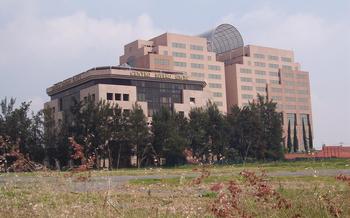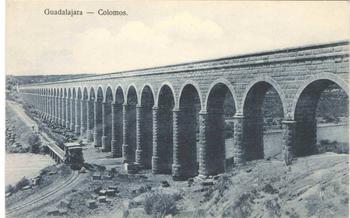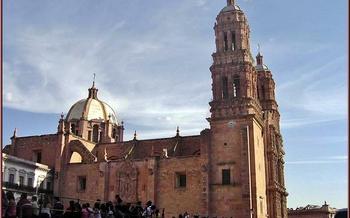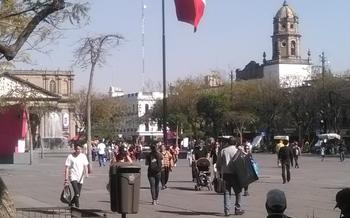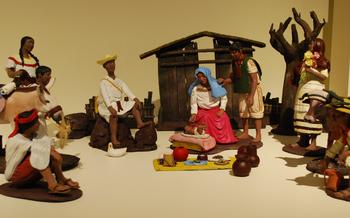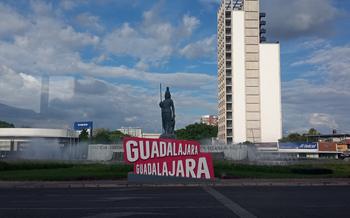
Guachimontones Pyramids
- Historical Significance
- Location and Accessibility:
- Architectural Features
- Pre-Columbian Culture
- Excavations and Discoveries
- Interactive Experiences
- Scenic Views and Surroundings
- Local Cuisine and Restaurants
- Cultural Experiences
- Shopping and Souvenirs:
- Accommodation Options:
- Safety Tips and Precautions:
- Sustainable Travel Practices:
- Off-the-Beaten-Path Experiences
- Insider Tip:
Historical Significance
The Guachimontones Pyramids stand as enigmatic testaments to the ingenuity and cultural achievements of the pre-Columbian era. Built by the Teuchitlan people between 300 BC and 900 AD, these unique circular structures hold significant historical and archaeological value. Unlike the more commonly known Mesoamerican pyramids with square or rectangular bases, the Guachimontones Pyramids exhibit a distinctive circular shape, setting them apart from their counterparts. The site comprises a complex of several pyramids, each with multiple levels and ramps leading to the summit. These architectural features suggest that the pyramids served various purposes, including religious ceremonies, astronomical observations, and possibly even as a marketplace or gathering place for the Teuchitlan community. Archaeological excavations at the site have unearthed a wealth of artifacts, including ceramic vessels, stone tools, and human remains, shedding light on the daily lives and cultural practices of this ancient civilization. Ongoing research continues to unravel the mysteries surrounding the Guachimontones Pyramids, providing valuable insights into the rich history and legacy of the Teuchitlan people.
Location and Accessibility:
The Guachimontones Pyramids are located approximately 60 kilometers (37 miles) west of Guadalajara, the capital city of the state of Jalisco, in western Mexico. To reach the site, visitors can take a bus from Guadalajara's central bus station to the town of Teuchitlán, and then take a taxi or local transportation to the pyramids. Alternatively, travelers can drive from Guadalajara, following the signs to Teuchitlán and then to the Guachimontones Pyramids. The site is open to the public from Tuesday to Sunday, with guided tours available in Spanish and English. Admission fees are minimal, and visitors can also purchase souvenirs and handicrafts at the site's gift shop. While exploring the Guachimontones Pyramids, travelers can combine their trip with a visit to the nearby town of Tequila, famous for its production of the traditional Mexican spirit, or to the captivating Sierra de Tapalpa, a region renowned for its natural beauty and charming villages.
Architectural Features
The Guachimontones Pyramids stand out for their unique circular shape, a distinctive feature that sets them apart from other Mesoamerican pyramids. Constructed using locally sourced stone and earth materials, these structures showcase the advanced engineering skills of the Teuchitlan people. The circular platforms are arranged in concentric rings, creating a distinctive terraced effect. Ramps and staircases connect the different levels, allowing for easy access to the summit of the pyramids. Additionally, the structures incorporate astronomical alignments, suggesting their use for ceremonial and calendrical purposes. These architectural elements contribute to the significance of the Guachimontones Pyramids, making them a captivating testament to the ingenuity and craftsmanship of the ancient Teuchitlan culture.
Pre-Columbian Culture
The Guachimontones Pyramids were built by the Teuchitlan culture, an ancient Mesoamerican civilization that flourished in the region from around 300 BC to 900 AD. The Teuchitlans were skilled farmers, artisans, and traders, and their culture was deeply intertwined with the natural world.
They believed in a pantheon of gods and goddesses, including the sun god Tonatiuh and the moon goddess Meztli. The pyramids were likely used for religious ceremonies and rituals, as well as for astronomical observations. The Teuchitlans also built extensive irrigation systems and developed a sophisticated writing system.
However, by the 10th century AD, the Teuchitlan culture had declined and the pyramids were abandoned. The reasons for their decline are not fully understood, but it may have been due to a combination of factors, including climate change, warfare, and disease.
Despite their abandonment, the Guachimontones Pyramids remain an important testament to the ingenuity and creativity of the Teuchitlan culture. Today, they stand as a symbol of Mexico's rich cultural heritage and are a popular destination for visitors interested in learning more about the ancient civilizations of Mesoamerica.
Excavations and Discoveries
Extensive archaeological excavations have been conducted at the Guachimontones Pyramids since their rediscovery in the 1970s. Led by teams of archaeologists from the National Institute of Anthropology and History (INAH) and other institutions, these excavations have yielded significant insights into the history and culture of the Teuchitlan people.
During the excavations, archaeologists uncovered a wealth of artifacts, including ceramic vessels, stone tools, obsidian blades, and human remains. These artifacts provide valuable clues about the daily life, economy, and religious practices of the Teuchitlan culture. The discovery of human burials within the pyramids suggests that these structures served as mortuary complexes in addition to their ceremonial functions.
One of the most significant discoveries at the site was a large cache of ceramic figurines depicting various deities and animals. These figurines shed light on the religious beliefs of the Teuchitlan people and their veneration of the sun and moon. The figurines also provide valuable insights into the artistic traditions and craftsmanship of the Teuchitlan culture.
The excavations at the Guachimontones Pyramids have faced several challenges, including the looting and destruction of the site in the past. However, archaeologists have made significant progress in documenting and preserving the remaining structures and artifacts. Ongoing research and conservation efforts are underway to further understand the history and significance of this unique archaeological site.
Interactive Experiences
The Guachimontones Pyramids offer a range of interactive exhibits and educational programs that bring the ancient history and culture of the Teuchitlan people to life. Visitors can explore hands-on displays that showcase the construction techniques, daily life, and religious practices of this fascinating civilization. Interactive maps and timelines provide a comprehensive overview of the site's history and significance.
The pyramids also host workshops, lectures, and cultural events throughout the year. These events offer visitors a chance to engage with archaeologists, historians, and local artisans, gaining insights into the latest research and discoveries. Visitors can learn about traditional crafts, such as pottery and weaving, and participate in hands-on activities that allow them to create their own souvenirs.
By taking advantage of these interactive experiences, visitors can deepen their understanding of the Guachimontones Pyramids and the Teuchitlan culture. These programs provide a unique opportunity to connect with the past and gain a deeper appreciation for the rich cultural heritage of Mexico.
Scenic Views and Surroundings
The Guachimontones Pyramids offer breathtaking views of the surrounding countryside that will leave you in awe. Ascend to the top of these ancient structures and be rewarded with panoramic vistas that stretch for miles, showcasing a tapestry of lush vegetation, rolling hills, and distant mountain ranges. The picturesque backdrop will make you feel like you've stepped into a painting.
Plan your visit during the golden hour, just before sunset, to capture the most stunning photographs. The warm hues of the setting sun cast a magical glow on the pyramids, transforming them into silhouettes against the fiery sky. This is the perfect time to soak in the tranquility and serenity of the surroundings.
Once you're done exploring the pyramids, take some time to wander through the neighboring countryside. Discover hidden trails that lead to cascading waterfalls, serene lakes, and scenic viewpoints. Embrace the fresh air and immerse yourself in the beauty of nature. The Guachimontones Pyramids are not just about ancient history; they're also about connecting with the natural wonders that surround them.
Local Cuisine and Restaurants
The Guadalajara region boasts a rich culinary tradition that blends indigenous flavors with Spanish influences. Visitors to the Guachimontones Pyramids can savor the authentic dishes of this region at local restaurants near the site. Some must-try dishes include birria, a slow-cooked goat or beef stew served with a spicy sauce; pozole, a hearty soup made with hominy, meat, and vegetables; and tortas ahogadas, a traditional sandwich filled with pork carnitas and drowned in a spicy tomato sauce. For a taste of regional sweets, try the cajeta, a caramel sauce made from goat's milk, or the buñuelos, fried pastries dusted with sugar. Food festivals and culinary events are held throughout the year, offering visitors the chance to sample a wide variety of local delicacies and learn more about the region's gastronomic heritage.
Cultural Experiences
Guadalajara and its surroundings are a treasure trove of vibrant cultural experiences that visitors can immerse themselves in to fully appreciate the region's rich heritage. Attending traditional dance performances is a must, as the region is renowned for its folkloric dances that showcase the colorful costumes, intricate footwork, and lively music of Mexico. Music concerts and art exhibitions are also popular, allowing visitors to experience the diverse talents of local artists and musicians.
To delve deeper into the region's history and culture, visitors should explore the many museums, theaters, and historical sites scattered throughout Guadalajara. The Guadalajara Regional Museum, for example, houses a vast collection of artifacts and exhibits that tell the story of the region's past, from pre-Columbian times to the present day. The Teatro Degollado, a stunning neoclassical theater, hosts a variety of performances, including concerts, plays, and ballets.
The people of Guadalajara are known for their warm hospitality and friendly nature, and visitors are encouraged to interact with the locals to experience the true essence of Mexican culture. Whether it's striking up a conversation with a street vendor, joining a local cooking class, or simply exploring the city's vibrant markets, visitors will find that the people of Guadalajara are always willing to share their stories and traditions.
Shopping and Souvenirs:
Guadalajara offers a vibrant shopping scene, ranging from traditional markets to modern shopping malls. Souvenir hunters will find a treasure trove of unique items inspired by the Guachimontones Pyramids and the Teuchitlan culture. The Mercado Libertad, located in the heart of downtown Guadalajara, is a great place to start your shopping adventure. This traditional market offers a wide variety of handicrafts, pottery, and textiles, all handmade by local artisans. For a more upscale shopping experience, head to the Andares Shopping Mall, which houses high-end boutiques, international brands, and art galleries. Don't forget to look out for local artisans who sell their handmade goods at the Guachimontones Pyramids. These artisans often specialize in creating replicas of the pyramids, pottery, and other artifacts, making for unique and authentic souvenirs.
Accommodation Options:
When planning your trip to the Guachimontones Pyramids, you'll find a range of accommodation options to suit your preferences and budget. For a comfortable stay near the site, consider booking a room at the Hotel Real de Los Guachimontones, which offers modern amenities and stunning views of the surrounding countryside. Alternatively, you can opt for a more rustic experience at the Cabañas El Teuchitlan, a collection of charming cabins nestled amidst lush gardens. Budget-conscious travelers may prefer the Hostal El Sol, which provides basic but clean and comfortable accommodations. To secure the best deals and availability, especially during peak tourist season, it's advisable to book your accommodation in advance.
Safety Tips and Precautions:
Guadalajara and its surroundings are generally safe for tourists, but as with any destination, it's important to take precautions to ensure a smooth and enjoyable trip. Here are some safety tips to keep in mind:
- Be aware of your surroundings and avoid walking alone at night, especially in isolated areas.
- Use official transportation services, such as taxis from reputable companies or ride-sharing apps.
- Learn a few basic Spanish phrases to communicate with locals and navigate more easily.
- Respect local customs and traditions, and dress appropriately when visiting religious or conservative areas.
- Keep your valuables safe by using a money belt or RFID-blocking wallet, and avoid carrying large amounts of cash.
- Be cautious of pickpockets, especially in crowded areas like markets or public transportation.
- If you're driving, be aware of the local traffic laws and customs, and drive defensively.
Sustainable Travel Practices:
As responsible travelers, it is essential to adopt sustainable practices to minimize our impact on the environment while exploring the Guachimontones Pyramids and the surrounding region. Consider using public transportation or carpooling to reduce carbon emissions. Bring reusable water bottles and avoid single-use plastics to reduce waste. Respect the natural habitats of wildlife and observe them from a distance. Support local initiatives and organizations that promote sustainable tourism, such as recycling programs or community-based projects. By embracing sustainable practices, we can help preserve the beauty and cultural heritage of the Guachimontones Pyramids for future generations while contributing to the well-being of the local community.
Off-the-Beaten-Path Experiences
Beyond the Guachimontones Pyramids, the Guadalajara region offers a wealth of hidden gems waiting to be explored. Escape the crowds and discover the authentic charm of nearby towns and villages, where you can immerse yourself in traditional Mexican culture and traditions. Nature enthusiasts will be thrilled by the region's unspoiled natural wonders, from cascading waterfalls and rugged canyons to tranquil hot springs. Whether you prefer hiking through lush forests, exploring ancient caves, or simply relaxing in a picturesque setting, there's something for everyone off the beaten path in Guadalajara. Embrace your adventurous spirit and venture beyond the pyramids to uncover the hidden treasures of this vibrant region.
Insider Tip:
Unleash your inner adventurer and embark on a thrilling hike to the summit of Cerro del Cuatro, a nearby hill that offers breathtaking panoramic views of the Guachimontones Pyramids and the surrounding countryside. The trail is moderately challenging but well worth the effort, as you'll be rewarded with awe-inspiring vistas that will leave you breathless. Remember to bring comfortable shoes, plenty of water, and your camera to capture the unforgettable beauty of this hidden gem.

